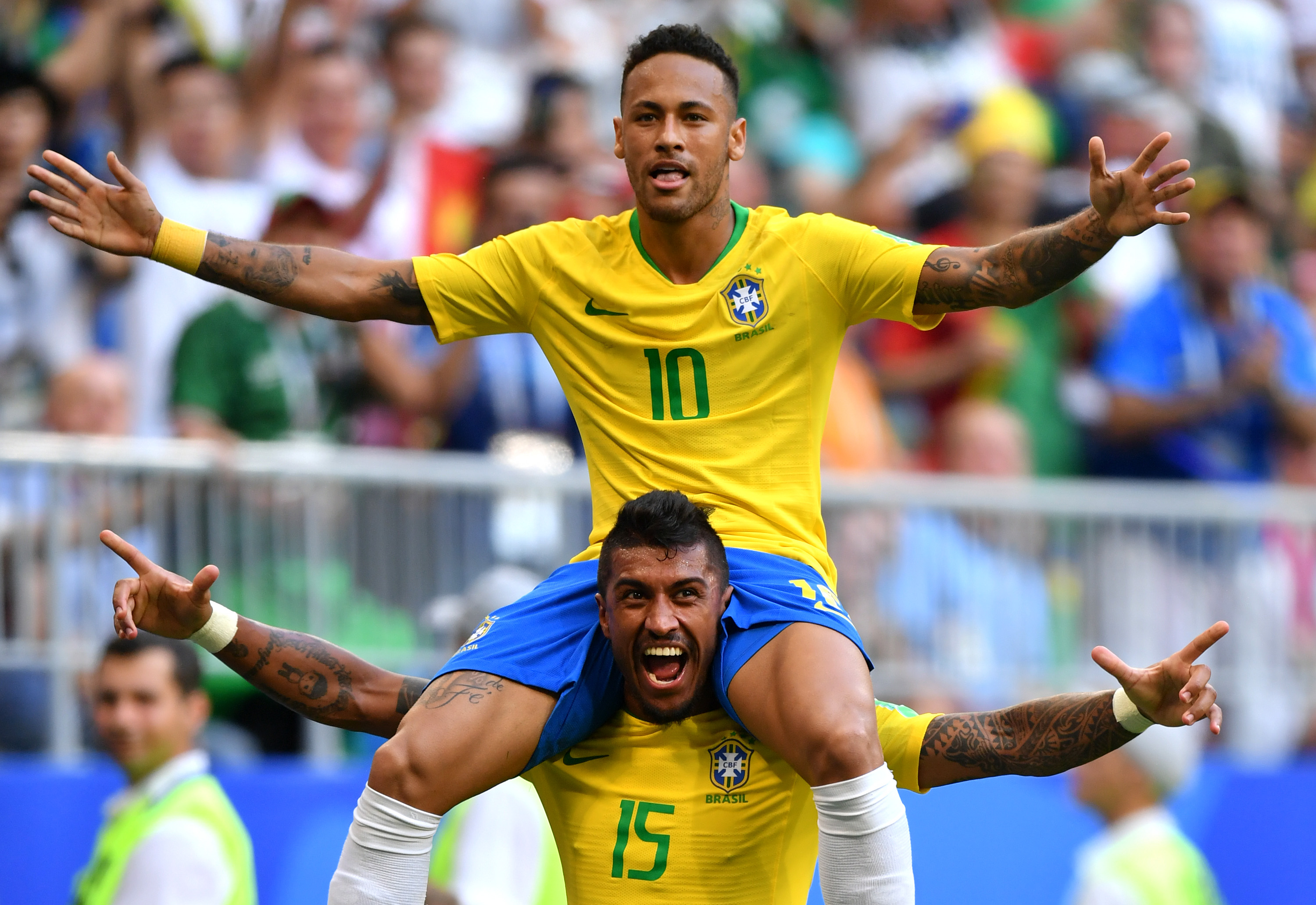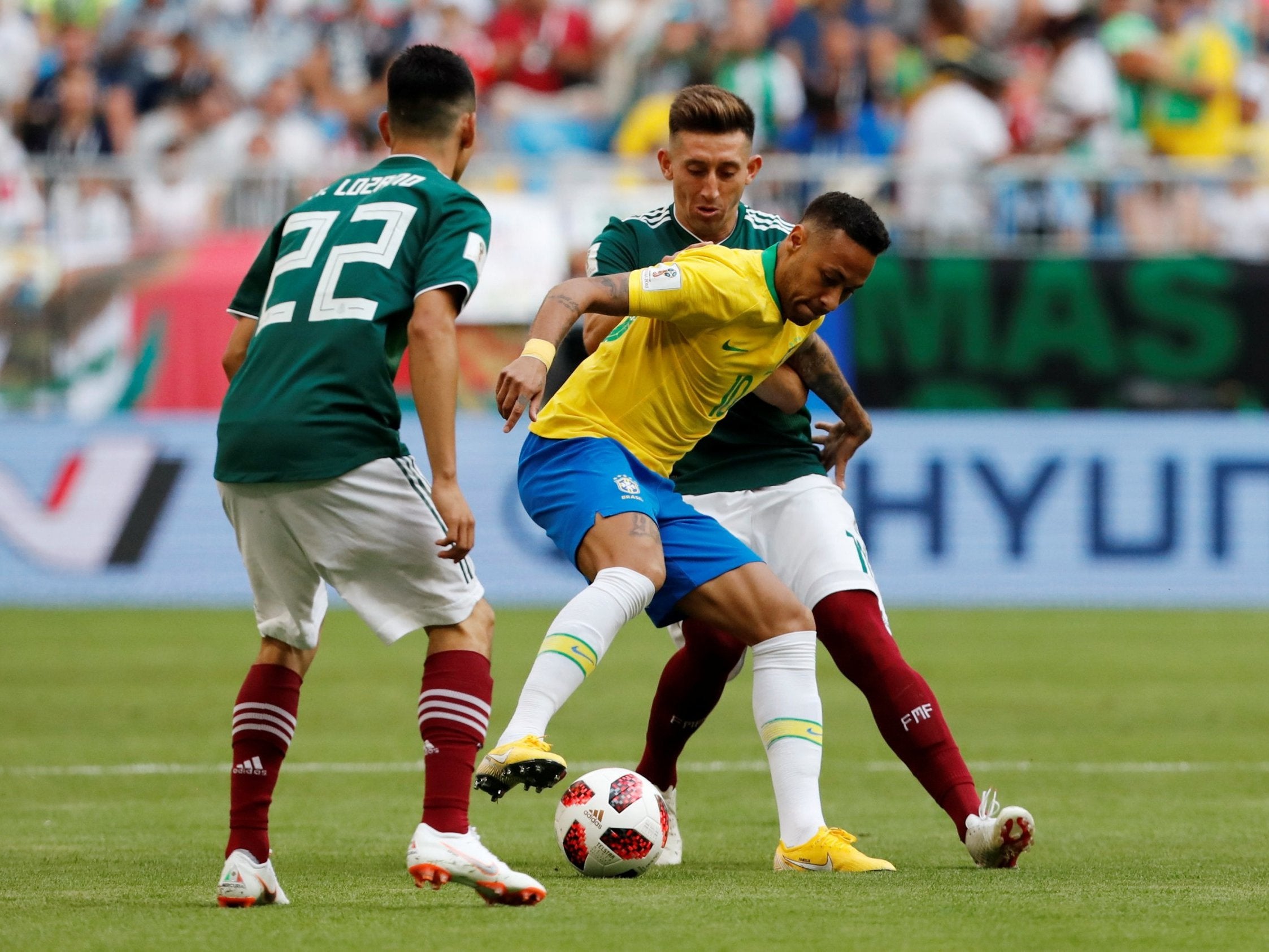Cultural Heritage: Mexico Vs Brazil

Mexico vs brazil – Mexico and Brazil, two vibrant nations brimming with rich cultural traditions, share a tapestry of captivating art forms, delectable cuisine, and a deep-rooted passion for self-expression. Their cultural heritage, shaped by a fusion of indigenous, European, and African influences, manifests in a kaleidoscope of unique expressions that captivate the senses and inspire the soul.
While the rivalry between Mexico and Brazil has captivated football fans for decades, the upcoming Euro 2024 tournament will offer a different kind of spectacle. This prestigious competition, hosted in Germany, will feature some of the world’s top teams battling for continental glory.
The absence of Mexico and Brazil from this tournament may be disappointing to some, but it will undoubtedly provide an unforgettable experience for those who tune in. The Euro 2024 official website offers comprehensive coverage of the tournament, including fixtures, results, and team profiles.
Traditional Music and Dance
The rhythmic pulse of Mexico and Brazil reverberates through their traditional music and dance, each style carrying its own distinctive flavor. Mexico’s mariachi bands, with their enchanting melodies and vibrant costumes, have become synonymous with the country’s cultural identity. The lively rhythms of the son jarocho, a genre originating from the coastal region of Veracruz, invite dancers to showcase their graceful footwork and playful interactions.
The rivalry between Mexico and Brazil is one of the most intense in international football. The two teams have met 37 times, with Brazil holding a 19-12-6 advantage. The most recent meeting was a 2-0 win for Brazil in the 2018 FIFA World Cup.
The two teams are set to meet again in the 2022 FIFA World Cup, and the match is sure to be a thriller. For more information about the rivalry between Mexico and Brazil, please visit méxico brasil.
In Brazil, the infectious beats of samba, originating in the streets of Rio de Janeiro, have captivated the world with their energetic and sensual movements. The intricate steps of capoeira, an Afro-Brazilian martial art disguised as a dance, combine athleticism and rhythm, embodying the country’s rich cultural heritage.
The rivalry between Mexico and Brazil in football is one of the most intense in the world. Both teams have a rich history and have produced some of the greatest players in the game. Mexico has won the CONCACAF Gold Cup 11 times, while Brazil has won the Copa América nine times.
The two teams have met in the FIFA World Cup on four occasions, with Brazil winning three times and Mexico winning once. Their next meeting will be in the 2022 FIFA World Cup in Qatar. mexico vs brasil is always a highly anticipated match, and the 2022 World Cup clash is sure to be no different.
Cuisine
The culinary landscapes of Mexico and Brazil burst with an array of tantalizing flavors, reflecting the diverse influences that have shaped their history. Mexican cuisine, known for its bold and spicy flavors, showcases a harmonious blend of indigenous ingredients and Spanish culinary techniques. The iconic dishes of tacos, tamales, and mole poblano exemplify the country’s culinary prowess.
The highly anticipated match between Mexico and Brazil is set to take place this weekend, promising an exciting clash between two football powerhouses. This match is part of a series of international friendlies that serve as a platform for teams to prepare for upcoming tournaments and evaluate their current form.
Mexico and Brazil will both be eager to put on a strong performance in front of their home crowds, making this match a must-watch for football enthusiasts.
Brazilian cuisine, equally diverse and flavorful, draws inspiration from its Portuguese, African, and indigenous roots. The national dish, feijoada, a hearty stew of black beans, meat, and vegetables, embodies the country’s culinary melting pot. Acarajé, a savory bean fritter originating in the state of Bahia, reflects the strong African influence in Brazilian cuisine.
Art and Literature
The artistic and literary expressions of Mexico and Brazil have been profoundly shaped by their historical and contemporary experiences. Mexican art, from the vibrant murals of Diego Rivera to the surrealist paintings of Frida Kahlo, often reflects the country’s political and social struggles. Contemporary Mexican literature, exemplified by authors like Carlos Fuentes and Elena Poniatowska, explores themes of identity, history, and the human condition.
Brazilian art, influenced by European modernism and indigenous traditions, showcases a diverse range of styles. The works of renowned artists such as Tarsila do Amaral and Cândido Portinari often depict scenes of everyday life, capturing the essence of Brazilian culture. Brazilian literature, with its rich tradition of poetry, fiction, and drama, has produced acclaimed writers like Jorge Amado and Clarice Lispector, whose works delve into themes of love, loss, and the search for identity.
The rivalry between Mexico and Brazil has always been one of the most intense in international football. The two teams have met in the final of the Copa America on several occasions, and their matches are always fiercely contested. The most recent meeting between the two teams was in the 2019 Copa America, where Brazil emerged victorious.
However, Mexico will be looking to avenge that defeat when the two teams meet again in the 2023 Copa America.
Economic Dynamics

Mexico and Brazil, the two largest economies in Latin America, share many similarities but also have distinct economic characteristics. This section compares their economic growth rates, development models, key industries, and challenges in the global economic landscape.
Economic Growth Rates and Development Models
Mexico and Brazil have experienced different economic growth rates in recent decades. Mexico’s economy has grown at a relatively steady pace, averaging around 2.5% annually since the 1990s. Brazil, on the other hand, has experienced more volatility, with periods of high growth followed by periods of recession. In the past decade, Brazil’s economy has grown at an average rate of around 1.5% annually.
The two countries also have different development models. Mexico has pursued a more market-oriented approach, while Brazil has adopted a more interventionist approach. In recent years, Brazil has shifted towards a more market-oriented approach, but the government still plays a significant role in the economy.
Key Industries and Sectors
The economies of Mexico and Brazil are driven by a variety of key industries and sectors. In Mexico, the most important industries include manufacturing, tourism, and remittances. In Brazil, the most important industries include agriculture, mining, and energy.
Mexico’s manufacturing sector is particularly important, accounting for around 20% of GDP. The country has a large and well-developed automotive industry, as well as a significant electronics industry. Tourism is also a major source of revenue for Mexico, with over 40 million international visitors each year.
Brazil’s agricultural sector is one of the largest in the world, accounting for around 10% of GDP. The country is a major producer of soybeans, corn, and sugar. Brazil also has a significant mining industry, and is the world’s largest producer of iron ore.
Challenges and Opportunities, Mexico vs brazil
Mexico and Brazil face a number of challenges and opportunities in the global economic landscape. One of the biggest challenges is the rising cost of energy. Both countries are heavily dependent on fossil fuels, and the rising cost of oil and gas is putting a strain on their economies.
Another challenge is the increasing competition from China. China has become a major economic power in recent years, and its low-cost exports are putting pressure on Mexican and Brazilian manufacturers.
Despite these challenges, Mexico and Brazil also have a number of opportunities. Both countries have large and growing populations, which provides a large market for goods and services. Additionally, both countries have a wealth of natural resources, which can be used to develop new industries.
Social and Political Landscapes

Mexico and Brazil share a complex and multifaceted social and political landscape. Both countries have faced significant challenges, including poverty, inequality, and healthcare disparities. However, they have also made progress in addressing these issues through social and political reforms.
Political Systems and Governance Structures
Mexico is a federal republic with a presidential system of government. The president is both the head of state and head of government. The country has a bicameral legislature consisting of the Chamber of Deputies and the Senate. Brazil is also a federal republic, but it has a semi-presidential system of government. The president is the head of state, while the prime minister is the head of government. Brazil’s legislature is also bicameral, consisting of the Chamber of Deputies and the Federal Senate.
Social Issues and Challenges
Both Mexico and Brazil face significant social challenges, including poverty, inequality, and healthcare disparities. Poverty rates in Mexico are around 43%, while in Brazil they are around 25%. Inequality is also a major issue in both countries, with the richest 10% of the population owning a significant portion of the wealth. Healthcare systems in both countries are underfunded and often inaccessible to the poor.
Role of Civil Society and the Media
Civil society and the media play an important role in shaping the social and political landscapes of Mexico and Brazil. Civil society organizations have been at the forefront of efforts to address social issues such as poverty, inequality, and healthcare. The media has also played a crucial role in exposing corruption and holding governments accountable.